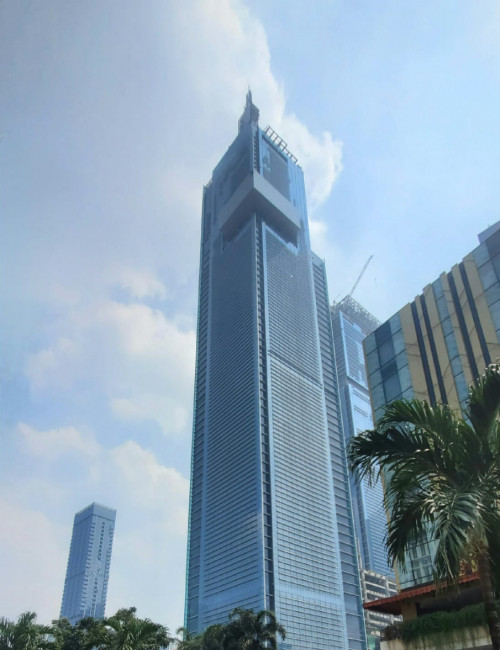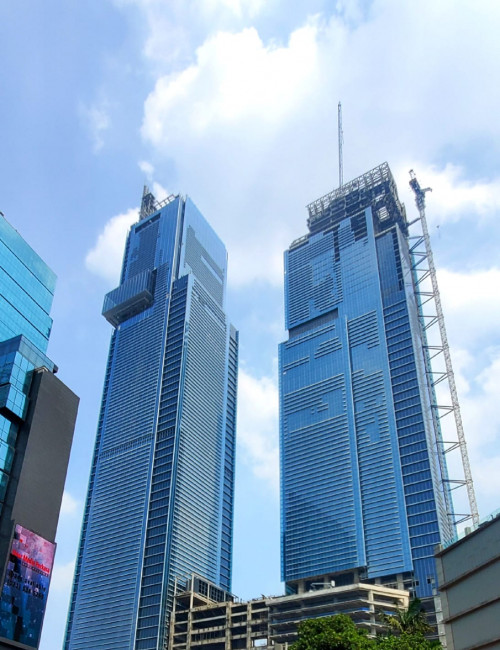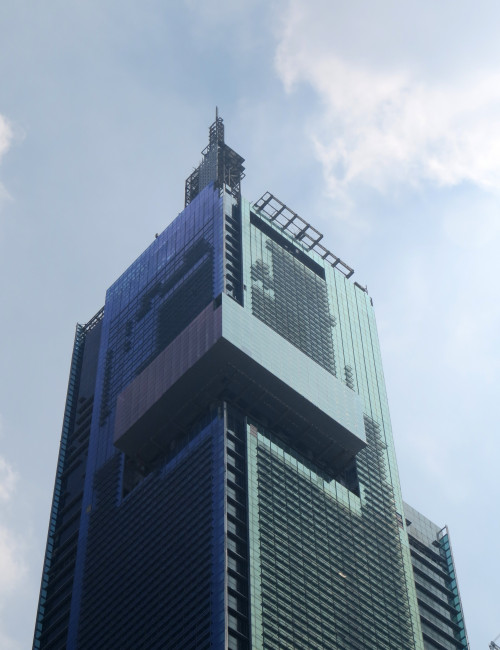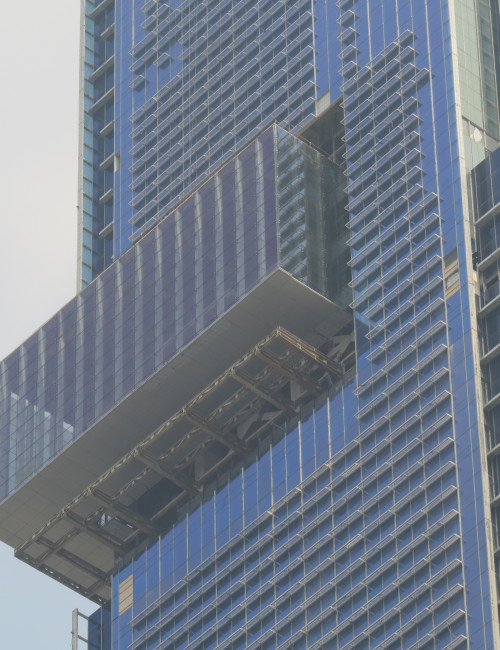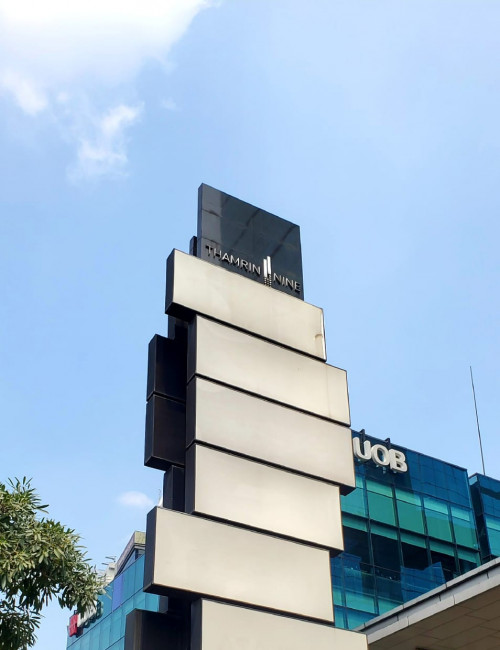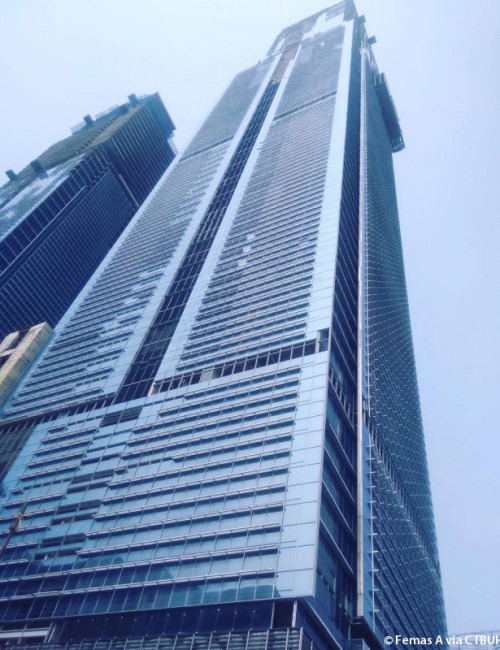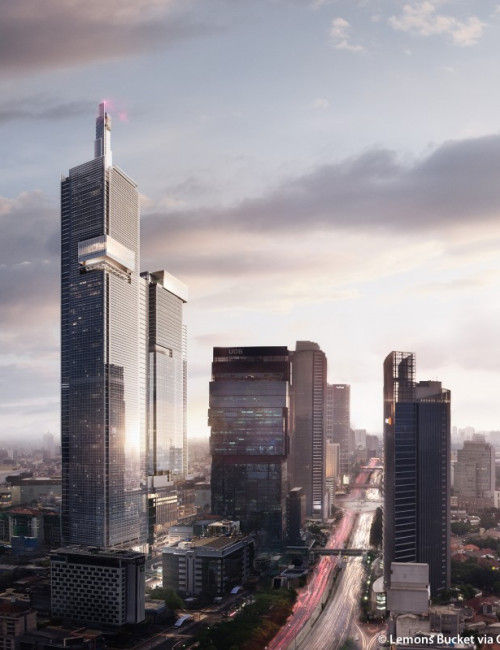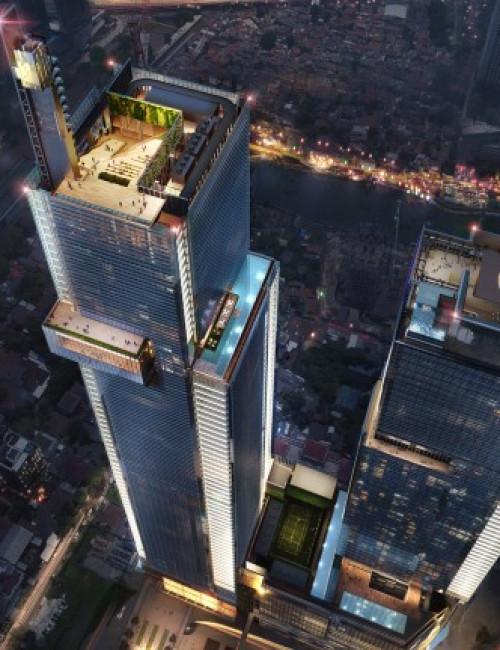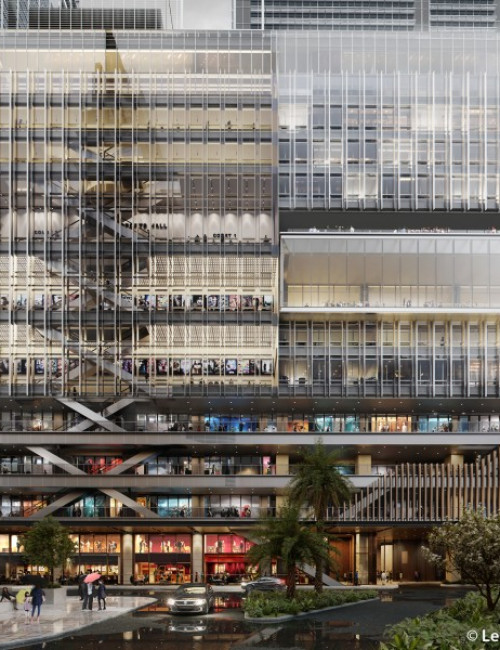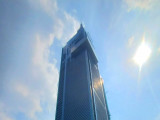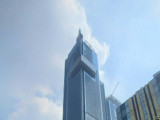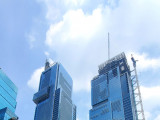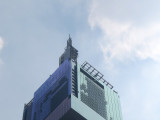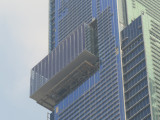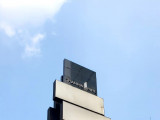Height rank
Autograph Tower
Jakarta
This project is a redesign and replaced Thamrin Nine Tower 1
- Facts
-
Metrics
You must be a CTBUH Member to view this resource.
Official Name
Autograph Tower
Other Names
Waldorf Astoria Jakarta, Thamrin Nine Tower 1
Name of Complex
Type
Building
Status
Completed
Completion
2022
Country
City
Address
Function
A mixed-use tall building contains two or more functions (or uses), where each of the functions occupy a significant proportion of the tower's total space. Support areas such as car parks and mechanical plant space do not constitute mixed-use functions. Functions are denoted on CTBUH "Tallest Building" lists in descending order, e.g., "hotel/office" indicates hotel function above office function.
Hotel / Office
Structural Material
Both the main vertical/lateral structural elements and the floor spanning systems are constructed from steel. Note that a building of steel construction with a floor system of concrete planks or concrete slab on top of steel beams is still considered an “all-steel” structure as the concrete elements are not acting as the primary structure.
All-Concrete
Both the main vertical/lateral structural elements and the floor spanning systems are constructed from concrete which has been cast in place and utilizes steel reinforcement bars and/or steel reinforced concrete which has been precast as individual components and assembled together on-site.
All-Timber
Both the main vertical/lateral structural elements and the floor spanning systems are constructed from timber. An all-timber structure may include the use of localized non-timber connections between timber elements. Note that a building of timber construction with a floor system of concrete planks or concrete slab on top of timber beams is still considered an “all-timber” structure as the concrete elements are not acting as the primary structure.
Mixed-Structure
Utilizes distinct systems (e.g. all-steel, all-concrete, all-timber), one on top of the other. For example, a Steel Over Concrete indicates an all-steel structural system located on top of an all-concrete structural system, with the opposite true of Concrete Over Steel.
Composite
A combination of materials (e.g. steel, concrete, timber) are used together in the main structural elements. Examples include buildings which utilize: steel columns with a floor system of reinforced concrete beams; a steel frame system with a concrete core; concrete-encased steel columns; concrete-filled steel tubes; etc. Where known, the CTBUH database breaks out the materials used within a composite building’s primary structural elements.
Concrete-Steel Composite
Energy Label
BCA Green Mark Platinum
Height
382.9 m / 1,256 ft
Floors Above Ground
75
Floors Below Ground
6
# of Hotel Rooms
183
Tower GFA
186,000 m² / 2,002,087 ft²
Rankings
-
By function
You must be a CTBUH Member to view this resource.
-
By material
You must be a CTBUH Member to view this resource.
Construction Schedule
Proposed
Construction Start
Completed
Architect
Usually involved in the front end design, with a "typical" condition being that of a leadership role through either Schematic Design or Design Development, and then a monitoring role through the CD and CA phases.
Structural Engineer
The Design Engineer is usually involved in the front end design, typically taking the leadership role in the Schematic Design and Design Development, and then a monitoring role through the CD and CA phases.
MEP Engineer
The Design Engineer is usually involved in the front end design, typically taking the leadership role in the Schematic Design and Design Development, and then a monitoring role through the CD and CA phases.
Other Consultant
Other Consultant refers to other organizations which provided significant consultation services for a building project (e.g. wind consultants, environmental consultants, fire and life safety consultants, etc).
Other Consultant refers to other organizations which provided significant consultation services for a building project (e.g. wind consultants, environmental consultants, fire and life safety consultants, etc).
These are firms that consult on the design of a building's façade. May often be referred to as "Cladding," "Envelope," "Exterior Wall," or "Curtain Wall" Consultant, however, for consistency CTBUH uses the term "Façade Consultant" exclusively.
You must be a CTBUH Member to view this resource.
Owner/Developer
PT. Putra Gaya Wahana
Architect
Usually involved in the front end design, with a "typical" condition being that of a leadership role through either Schematic Design or Design Development, and then a monitoring role through the CD and CA phases.
Usually takes on the balance of the architectural effort not executed by the "Design Architect," typically responsible for the construction documents, conforming to local codes, etc. May often be referred to as "Executive," "Associate," or "Local" Architect, however, for consistency CTBUH uses the term "Architect of Record" exclusively.
PT. Paramita Abirama Istasadhya
Structural Engineer
The Design Engineer is usually involved in the front end design, typically taking the leadership role in the Schematic Design and Design Development, and then a monitoring role through the CD and CA phases.
Meinhardt; Wiratman
MEP Engineer
The Design Engineer is usually involved in the front end design, typically taking the leadership role in the Schematic Design and Design Development, and then a monitoring role through the CD and CA phases.
Beca Group; Meinhardt; PT. Meltech
Other Consultant
Other Consultant refers to other organizations which provided significant consultation services for a building project (e.g. wind consultants, environmental consultants, fire and life safety consultants, etc).
Other Consultant refers to other organizations which provided significant consultation services for a building project (e.g. wind consultants, environmental consultants, fire and life safety consultants, etc).
These are firms that consult on the design of a building's façade. May often be referred to as "Cladding," "Envelope," "Exterior Wall," or "Curtain Wall" Consultant, however, for consistency CTBUH uses the term "Façade Consultant" exclusively.
Belt Collins & Associates
PT. LITAC
Lemons Bucket
Hilton Worldwide; Pan Pacific Hotels Group
Research
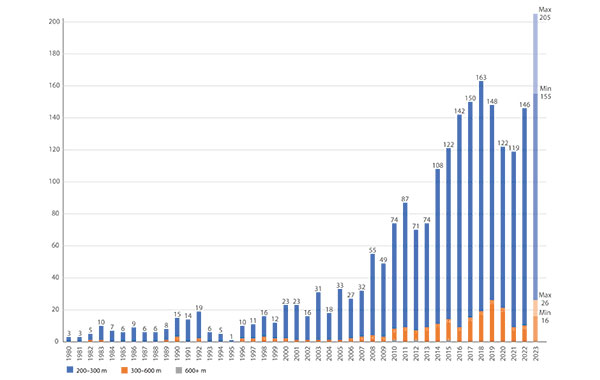
16 May 2023
World Surpasses 2,000 Buildings of 200 Meters or Greater Height
CTBUH Staff
This report shows that 147 buildings of 200 meters’ height or greater were completed in 2022, a 25 percent increase from 2021, when 118 such...
Global News

31 March 2021
Tower Tops Out in Jakarta Mixed-Use Complex
Autograph Tower, a 383-meter-tall, skyline-defining building in Jakarta, recently topped out, marking the latest milestone in the construction of the Thamrin Nine mixed-use development. Along...
About Autograph Tower
Thamrin Nine is a high-rise complex situated near one of Jakarta’s most historic and socially active venues, the Bundaran Hi Monument, and will be highly visible along the well-traveled Jalan Thamrin thoroughfare. The development is most identifiable through the juxtaposition of two paired geometric towers, the most visible of which is Tower 1, the flagship of the development. A dense retail podium links Tower 1 and Tower 2, and taken together, the buildings form an identifiable, architectural composition defined by strong cubic forms and projecting rectangular volumes.
Inspired by the nearby UOB Plaza tower, Autograph Tower is meant to rise with a visual presence that stems from its height, proportion, and simple extruded surfaces. This expression is bolstered by a layered façade with “floating” silver blue glass cladding, its planar language giving depth and dynamism to the tower while unifying programmatic variation. Subtle articulation of the façade through the use of specular silver edges and horizontal fins brings a sense of scale to the tower, while also providing passive shading to the entire building. The key element of Tower 1, set against its strictly planar expression, is a prominent, cantilevered, public observation deck that hovers above an outdoor skywalk.
The building integrates a range of public and private functions within 186,000 square meters of space. At its base are restaurants, retail shops, and a two-story atrium serving the tower’s office floors, which include a penthouse zone of offices with triple-height voids connecting multi-level tenant spaces. A separate lobby serves hotel floors at the top of the tower, where a central atrium brings light and air into the interior. At the top of the tower is an open-air roof garden arranged at varying levels to distinguish the public roof deck from private hotel amenities.
Research

16 May 2023
World Surpasses 2,000 Buildings of 200 Meters or Greater Height
CTBUH Staff
This report shows that 147 buildings of 200 meters’ height or greater were completed in 2022, a 25 percent increase from 2021, when 118 such...
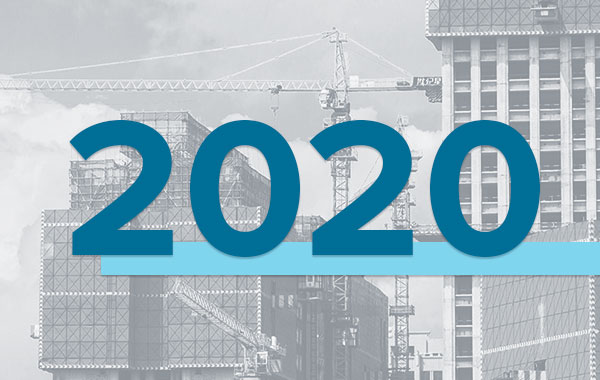
30 January 2020
Tall Building Predictions for 2020
CTBUH Research
The combined brains of the CTBUH editorial and database staff boldly predict what might happen across the global skyscraper industry in 2020. Check out our...
Subscribe below to receive periodic updates from CTBUH on the latest Tall Building and Urban news and CTBUH initiatives, including our monthly newsletter. Fields with a red asterisk (*) next to them are required.
View our privacy policy


